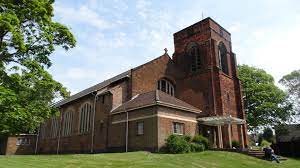Christmas: Why 25th December?

25th December started life as a pagan festival, the Roman celebration of Saturnalia, Instead of working the Romans spent their time gambling, singing, playing music, feasting, socializing and giving each other gifts. Wax taper candles called cerei were common gifts during Saturnalia, to signify light returning after the solstice. On his conversion to Christianity, the emperor Constantine declared that this festival would henceforth would be a celebration of the birth of Jesus Christ. The first recorded use of 25th December to celebrate Christ’s birth was in 336 AD. Since then most of the Western World has retained this date. There is absolutely no reason to believe that the 25th December is actually Jesus’ birthday.
So where did all our Christmas traditions come from? Actually many of these come from pre-Christian pagan practices;
Holly – this was sacred to Druids as a plant which withstood winter and had magical powers. Christians adopted holly with the berries symbolising the blood of Christ and the sharp leaves the crown of thorns worn at his crucifixion
Yule log – The custom of burning the Yule Log goes back to, and before, medieval times. It was originally a Nordic tradition. Yule is the name of the old Winter Solstice festivals in Scandinavia and other parts of northern Europe, such as Germany. The Yule Log was originally an entire tree, that was carefully chosen and brought into the house with great ceremony. The largest end of the log would be placed into the fire hearth while the rest of the tree stuck out into the room! The log would be lit from the remains of the previous year’s log which had been carefully stored away and slowly fed into the fire through the Twelve Days of Christmas. It was considered important that the re-lighting process was carried out by someone with clean hands. Nowadays, of course, most people have central heating so it is very difficult to burn a tree!
Mistletoe – Mistletoe is a plant that grows on range of trees including willow, apple and oak trees. The tradition of hanging it in the house supposedly goes back to the times of the ancient Druids; however, there’s little evidence that this happened. It is also meant to possess mystical powers which bring good luck to the household and wards off evil spirits. It was also used as a sign of love and friendship in Norse mythology. When the first Christians came to Western Europe, some tried to ban the use of Mistletoe as a decoration in churches, because of some of the old stories about it, but many still continued to use it! York Minster used to hold a special Mistletoe Service in the winter, where wrong doers in the city of York could come and be pardoned. The custom of kissing under Mistletoe comes from England. The earliest recorded date mentioning kissing under the mistletoe is in 1784 in a musical. There was kissing under the mistletoe in the illustrations in the first book version of ‘A Christmas Carol’ published in 1843, and this might have helped to popularise kissing under the mistletoe.
Christmas Tree – Each year at the time of the winter solstice, ancient Egyptians celebrated by decorating their temples and homes with evergreen trees and wreaths. The prosperous plant represented everlasting life, peace, and opulence, which was important because winter was a time when their sun god, Ra, was ill and weak, reports History.com. After the solstice, Ra would slowly start glowing brighter and stronger, and an evergreen’s immortality symbolized the triumph of life over death. The Egyptians weren’t the only ones bringing the plant indoors, though. In Scandinavia, the Vikings believed evergreens were special gifts from Balder, their god of light and peace. And the Druids, an ancient Celtic priesthood said to walk the line between the gods and mankind, started bringing evergreens into the home around the 8th century, AD. Before then, the Druids worshipped oak trees as their idol. But English Benedictine monk St. Boniface, a man who devoted his life to converting pagans, offered the Druids a triangular-shaped balsam fir tree as a symbol of the Trinity, and it went on to replace their beloved oaks. They then used evergreens to adorn their temples as a celebration of life without death, hanging mistletoe sprigs over their doorways and windows to ward off evil spirits of diseases. Though 16th-century German theologian and priest Martin Luther is famed for sparking the Protestant Reformation, he’s also credited with bringing the Christmas tree to Germany and introducing it to Christianity in the way that it’s known today.
It might seem that today’s Christmas celebrations are not much different from pagan festivals. But there is a difference! Entwined with all the party-going, excesses and shadows of long dead pagan religions is the reality that a little over 2000 years ago God, the creator of the universe came among us as a baby – Jesus. Emmanuel, God with us. A perpetual light in a darkened world




